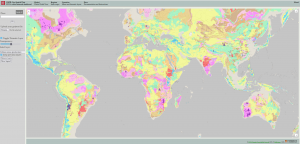Calculating the chemical exergy of materials
Modern society requires large amounts of materials which lead to emissions of greenhouse gases. Effective climate policy should focus on not just energy efficiency but material efficiency as well.
Exergy analysis is a powerful metric used to identify opportunities for efficiency improvement in industrial resource flow systems. Exergy offers a single unified measure of energy and material resources and indicates the real thermodynamic value of these resources, but the method suffers from a lack of comprehensive specific material chemical exergy datasets.
The variety of different materials used in the global resource supply chain necessitates a combination of exergy calculation approaches. These approaches are combined into a single exergy calculator tool with over 1400 substances in the dataset.
The chemical exergy values computed for key materials typically differ by less than 10% from values estimated in literature. The calculator is used in a case study of the upstream global material supply chain in 2013. The exergy resource map is visualized in a Sankey diagram and is found to be 72% resource efficient with 170 EJ of combined exergy losses and destruction. Further analysis is conducted on the refining, utilities, and industry sectors which are found to be 72%, 44%, and 50% resource efficient, respectively. Their combined losses and destruction are 15, 101, and 54 EJ, respectively.
This study and the calculator developed provide a comprehensive dataset of chemical exergy values for a wide range of materials and can be applied in a variety of studies using exergy analysis.
Follow the link here to read the full article by Harry, Jeremy Fouillou, Richard C. Lupton, Ana, and Jonathan in the Journal of Industrial Ecology
Photo credit: Daniel Olah













